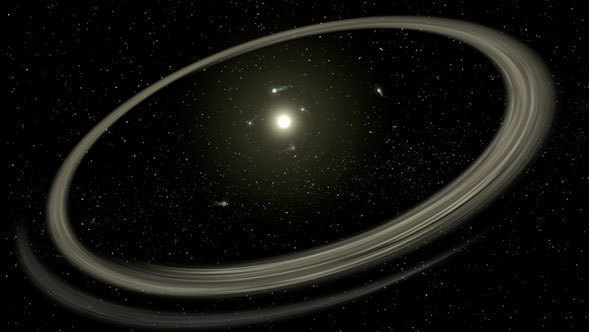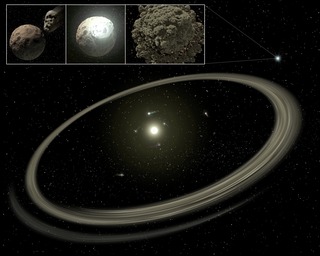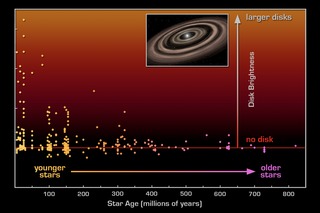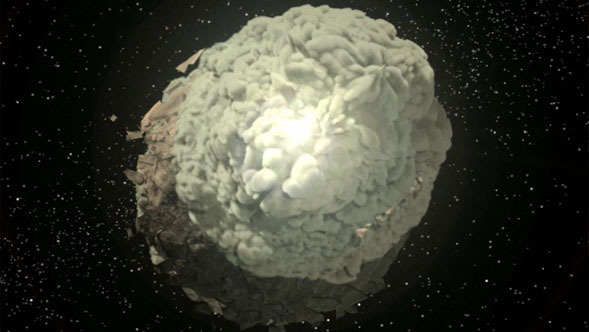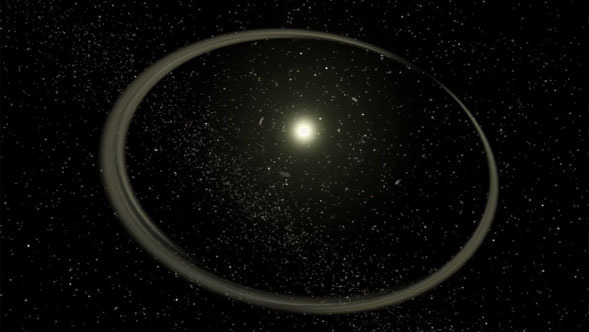When Worlds Collide
Science Animations Video • October 18th, 2004 • ssc2004-17v1
This animation illustrates a massive collision between rocky, embryonic planets as big as mountain ranges. Such collisions form the basis of the planet-building process. New findings from NASA's Spitzer Space Telescope show that these catastrophes continue to occur around stars even after they have developed full-sized planets, when they are as old as one hundred million years. For reference, our own Sun, at 4.5 billion years old, is far past this late stage of planet formation.
In this movie, the two embryonic planets are shown shattering into pieces. Later, the remnants of this impact may reassemble back into planet-like bodies. In less violent collisions, the two bodies can directly merge to make larger bodies. The dust generated from these collisions spreads out to form a ring of dust, or "debris disc," which can further lump together to form asteroids and other planet-like bodies. In time, the dust settles and a mature planetary system is born.
Spitzer was able to see the dust generated by these collisions with its powerful infrared vision.
Video Credit: NASA/JPL-Caltech/T. Pyle (SSC-Caltech)
